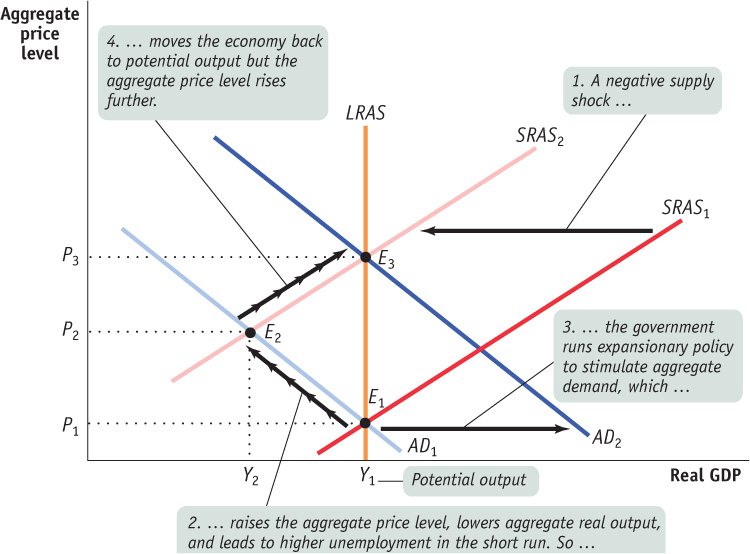
Figure12-22Stabilization Policy under a Negative Supply Shock Starting at E1, a negative (adverse) supply shock shifts SRAS1 leftward to SRAS2. In the short run the economy moves to E2 such that aggregate price level rises to P2, aggregate output falls to Y2, and unemployment rises. If the government responds to the negative supply shock by running an expansionary policy, such as an expansionary fiscal policy or monetary policy, aggregate demand increases to AD2. The economy moves to E3 in the short run: the aggregate price level increases further to P3 and aggregate output returns to potential output (Y1). Thus, the government faces a dilemma when the economy experiences an adverse supply shock.
[Leave] [Close]